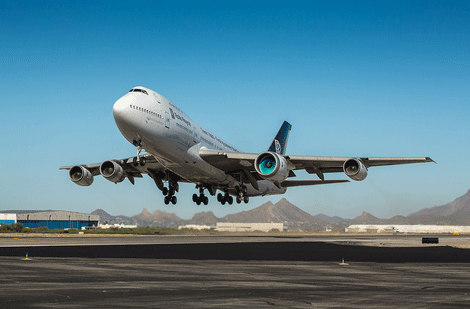
The test flight is another step on the path towards entering service in 2020
The Rolls-Royce composite carbon/titanium (CTi) fan blade for its Advance and UltraFan eco engine designs has taken to the skies for the first time.
The lighter fan blades retain aerodynamic performance, which when combined with a composite engine casing reduces weight by up to 1,500lb per aircraft, the equivalent of carrying seven more passengers at no cost.
The Advance engine design will offer at least 20 per cent less fuel burn and CO₂ emissions than the first generation of Rolls-Royce Trent engine and could be ready for entry into service from 2020.

The carbon/titanium composite blades are lighter in design, but retain the performance needed to propel a plane the size of a 747
UltraFan, a geared design with a variable pitch fan system, is based on technology that could be ready for service from 2025 and will offer at least 25 per cent less fuel and CO₂ emissions against the same baseline.
A set of the CTi fan blades successfully completed a first flight incorporated into a Trent 1000 “donor” engine, on a Rolls-Royce 747 flying test bed at Tucson, Arizona, USA.
Simon Carlisle, Rolls-Royce, Executive Vice President Strategy and Future Programmes – Civil Large Engines, said: “This first flight is another major milestone for our Advance and UltraFan engine designs. The CTi fan set will now undergo a range of flight tests.”






